Why Ilam Is Nepal’s Premier Tea Region

Introduction: Ilam, Nepal — A Hidden Gem in the Tea World
Globally, tea connoisseurs know Darjeeling, but few have tasted its Himalayan neighbor—Ilam, Nepal, a region where tea is more than a crop; it’s a tradition, a livelihood, and a craft. Tucked into the misty slopes of eastern Nepal, Ilam is fast gaining recognition as one of the world’s premier tea-growing regions.
At Nepali Tea Traders, we proudly source directly from Ilam’s small farms. The result? Award-winning, single-origin teas that speak of freshness, integrity, and flavor — from crisp white teas to bold oolongs and rich black teas. Let’s explore why Ilam is the future of fine tea.
Where Is Ilam?
Ilam lies in eastern Nepal, bordering India’s famed Darjeeling district. It stretches across the Mahabharat range with altitudes up to 7,200 feet, providing ideal growing conditions for tea.

Quick Facts:
-
🌍 Region: Ilam District, Province 1, Nepal
-
🌿 Elevation: 4,500 – 7,200 ft
-
☁️ Climate: Misty, cool, with ample rainfall
-
🧑🌾 Farms: Smallholder, family-run, often women-led
📖 Want to learn how Nepali tea began? Read our Nepali Tea Origins blog
Why Ilam’s Terroir Produces Exceptional Tea
Terroir—the land’s unique soil, weather, and elevation—gives Ilam tea its distinct depth and aroma.
What Makes Ilam’s Terroir Special:
-
🌱 Loamy, mineral-rich soil with excellent drainage and high organic content — ideal for Camellia sinensis cultivation
-
🌧️ Consistent monsoon rains and cool, misty mornings that slow leaf growth and enhance complexity
-
❄️ Snow-fed streams and natural mountain springs irrigate the tea gardens year-round
-
🌡️ Sharp temperature variation between day and night, which intensifies flavor development in the leaves
-
🐞 Naturally pesticide-free farming, thanks to biodiversity and regenerative agricultural practices
These natural advantages, paired with hand-harvesting and traditional processing, make Ilam teas high in antioxidants, low in bitterness, and beautifully nuanced.
Ilam vs. Darjeeling: What’s the Difference?
Though geographically close, Ilam and Darjeeling diverge in philosophy, production, and sustainability.
| Feature | Ilam, Nepal | Darjeeling, India |
|---|---|---|
| Elevation | Up to 7,200 ft | Up to 6,700 ft |
| Farming Model | Organic, smallholder-based | Estate-dominated, more commercialized |
| Harvesting Style | Hand-plucked, low-volume | Hand + mechanical, higher volume |
| Environmental Impact | Low, regenerative | Moderate to high |
| Labor Practices | Fair-pay cooperatives | Ongoing labor issues in some estates |
| Taste Profile | Clean, bold, fruity, floral | Muscatel, brisk, citrusy |
Ilam is less industrialized, more sustainable, and offers direct-sourced value that commercial brands can’t match.
5 Must-Try Ilam Teas (and Why They Matter)
1. Khumbu Black
-
Harvest: Summer
-
Notes: Red grape, malt, toasted walnut, apricot
-
Why it stands out: Grown at high elevation in Ilam, this tea is hand-rolled and naturally oxidized. It's bold yet smooth — perfect for breakfast or afternoon focus.
2. Himalayan Gold Organic Black Tea
-
Harvest: Monsoon
-
Notes: Honey, golden raisin, malt, cinnamon
-
Why it stands out: With its signature golden tips and award-winning flavor, this Ilam-grown tea is prized for its sweet, full-bodied cup. One of our most requested offerings.
3. Annapurna Amber Organic Oolong
-
Harvest: Summer
-
Notes: Stone fruit, cream, toasted almond
-
Why it stands out: Grown in Ilam and partially oxidized, this oolong delivers a rich, smooth finish and is incredibly versatile — enjoy it hot or cold-brewed for summer.
4. Spring White Buds
-
Harvest: Early Spring
-
Notes: Honeysuckle, melon, soft hay
-
Why it stands out: A rare white tea from Ilam’s first harvest of the year, made from unopened buds. Naturally dried, antioxidant-rich, and delicate — this was even featured in The New York Times.
5. Pokhara Classic Organic Green Tea
-
Harvest: Spring
-
Notes: Steamed greens, chestnut, mineral freshness
-
Why it stands out: While grown just outside Ilam, this green tea captures the same Himalayan purity. Ideal for cold brewing — a refreshing and nourishing choice for summer hydration.

Ethical & Regenerative Farming in Ilam
Choosing Ilam tea means:
-
Supporting women-led, smallholder farms
-
Protecting regenerative agricultural traditions
-
Drinking teas that are air-freighted fresh, not warehoused or auctioned
-
Promoting transparency from field to cup
We proudly source from farms that are USDA Organic Certified, maintain zero chemical inputs, and provide direct trade benefits to farming families.
🛒 Where to Buy Ilam Tea Online
You don’t need to travel to Nepal to experience Ilam’s best teas. We’ve done the sourcing — and we ship fast, fresh, and directly from the U.S.
✨ Shop Ilam-Sourced Teas:
🛍️ Always single-origin. Always farm-direct. Always award-winning.
📖 Related Blog Posts
-
Nepali Tea Origins: Why Sandakphu Tea Is Among the World’s Finest
-
Ultimate Guide to Nepali Tea: Types, Benefits & Brewing Tips
-
Top Black Teas by Region: Bold Flavors from the World’s Finest Gardens
FAQs About Ilam Tea
Is Ilam tea organic?
Yes. Our teas are either USDA Certified Organic or organically grown using sustainable, chemical-free practices by small farms in Nepal..
How is Ilam tea different from Darjeeling?
Ilam’s terroir is similar, but its teas are bolder, fresher, and more ethically sourced, with direct-to-importer shipping and less commercialization.
Can I cold brew Ilam teas?
Absolutely. Both Pokhara Classic Green Tea and Annapurna Amber Oolong are ideal for cold brew, delivering smooth, refreshing cups perfect for warm weather.
Ilam Is the Soul of Nepali Tea
If you’re seeking teas with depth, sustainability, and origin transparency, Ilam offers everything Darjeeling promises — and more. It’s the heart of Nepal’s tea story and the future of what fine tea should taste like.
🥇 Taste the best of Ilam today →
🔗 Explore Our Award-Winning Teas »
